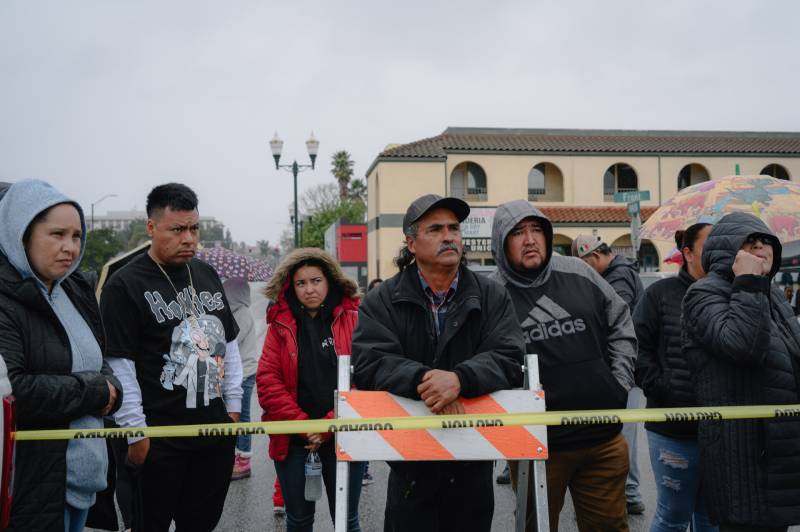Updated 11:30 a.m. Thursday
More than a week after the Pajaro River burst through an aging levee, submerging much of the small unincorporated community along its banks, the floodwaters had mostly receded.
But last weekend, the 2,000 Pajaro residents — many of them Latino farmworkers — who heeded the evacuation order in the early hours of March 11, fleeing across the river to seek shelter in Watsonville, were still waiting for permission to return home.
On Sunday, a group of displaced residents gathered across the river from their homes, on the Watsonville side of the Pajaro River Bridge, where sheriff’s deputies had established a checkpoint and were continuing to prevent most people from crossing back over.
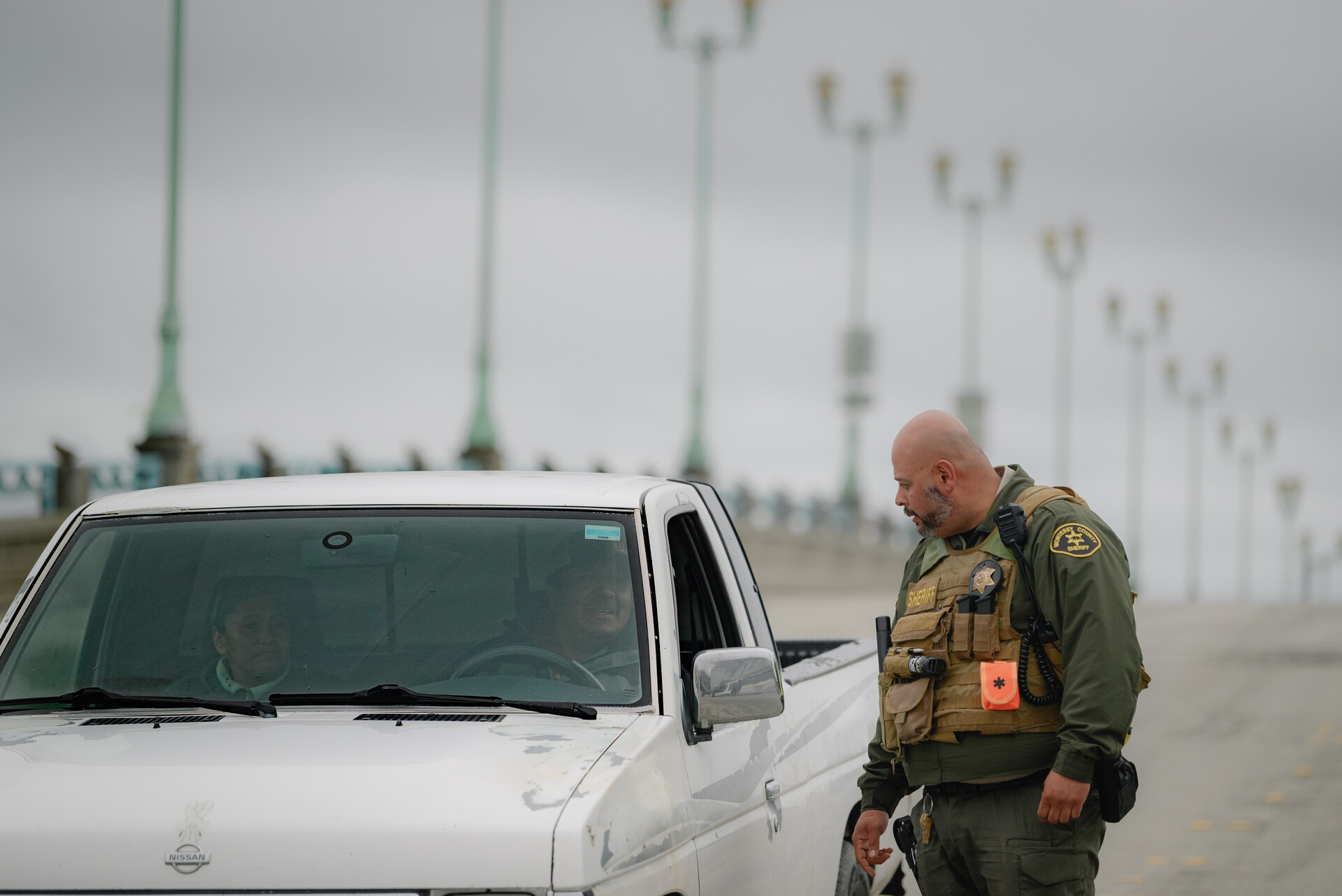
“It’s like the border,” Leonardo Torres, 53, a former farmworker who has lived in Pajaro for 13 years, said of the scene on the bridge, comparing it the checkpoint between the United States and Mexico. “This community has always been discriminated against for years.”
Facing growing pressure from the community, the Monterey County Office of Emergency Services on Thursday morning lifted the evacuation order — a day earlier than anticipated — allowing residents to return to their homes and assess the damage.
“We understand that many residents are eager to return to their homes and begin the process of recovery and clean-up, but we urge caution and emphasize that there are still health risks associated with re-entry,” the agency said in a statement.
Potable water remains unavailable, and toilets can’t be flushed, as crews continue to scramble to repair the town’s damaged wastewater sewer system, it said.
“It is not recommended that residents live in their homes until sewer and water is restored. Those who choose to enter the area do so at their own risk,” the agency warned. It noted that cleaning stations, portable toilets, showers, laundry services and information booths has been set up at Pajaro Park and Pajaro Middle School, and that free bus service is available to shuttle residents from evacuation shelters back into town.
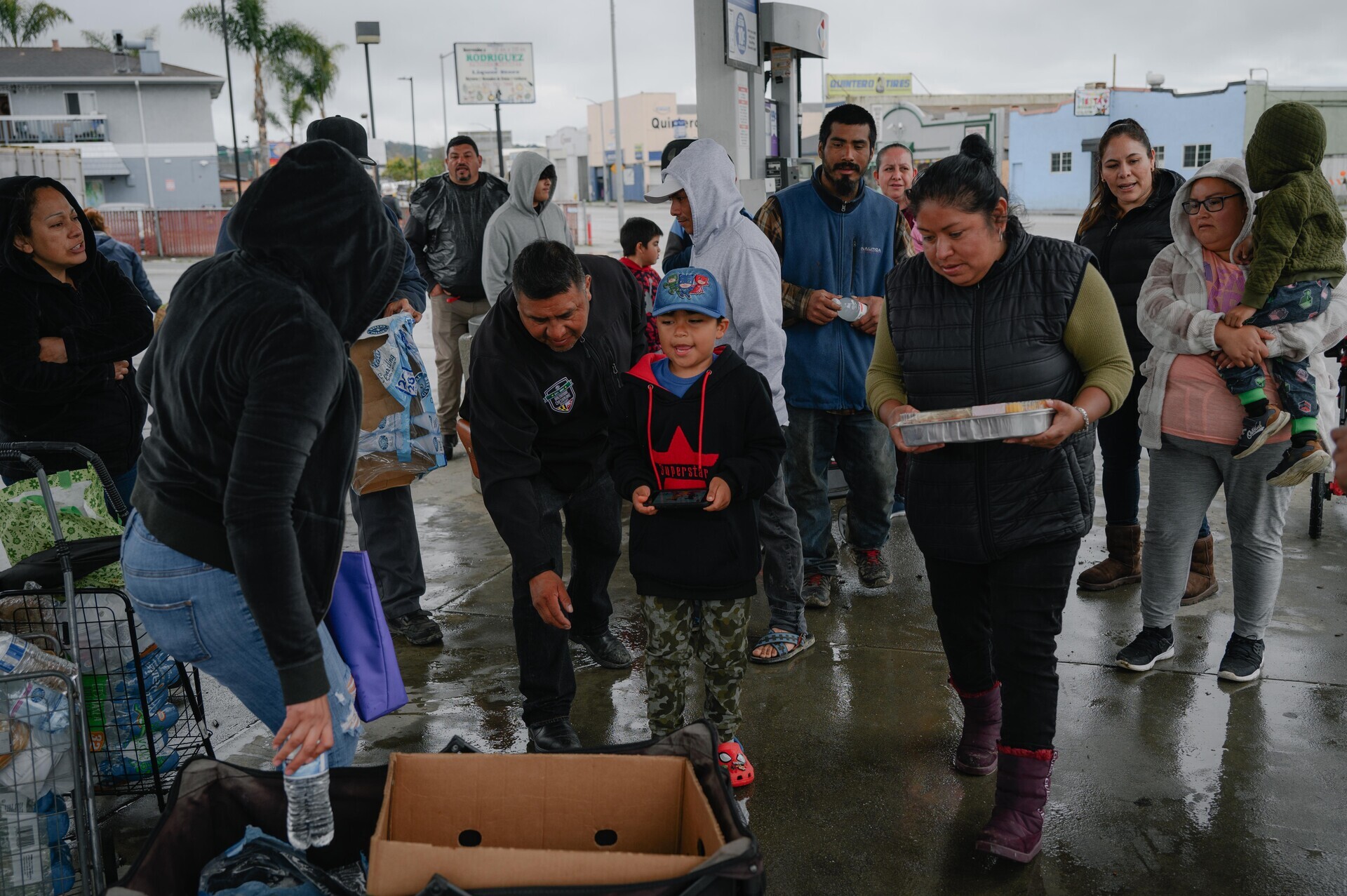
Situated some 3 miles upstream from Pajaro, the levee was built in 1949 and has failed multiple times. It “no longer provides the designed level of protection,” according to an Army Corps of Engineers webpage summary from 2021.
A devastating flood in 1995, in which two people drowned, resulted in as much as $95 million in economic damage. And just a few months ago, during the year’s first series of atmospheric rivers in January, residents were evacuated for a week amid severe flooding danger.
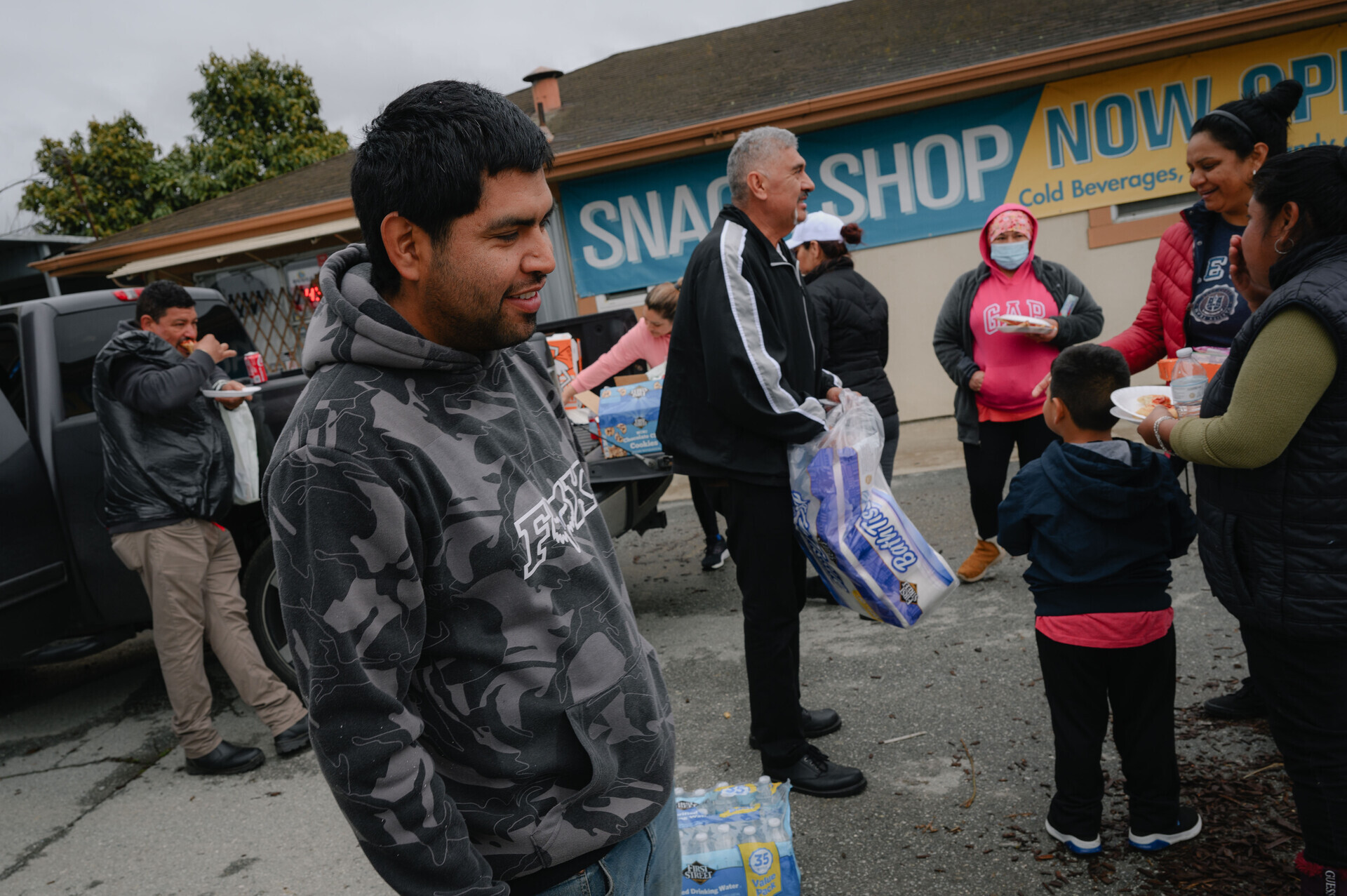
Local and federal officials had long known the levee could fail, but continuously postponed repair projects, The Los Angeles Times recently reported. The delays were, in part, because “it’s a low-income area. It’s largely farmworkers that live” there, an unnamed official told a Times reporter.
Torres, 53, was among the minority of residents who stayed put as the floodwaters approached, defying the evacuation order. “We’re survivors,” he said.
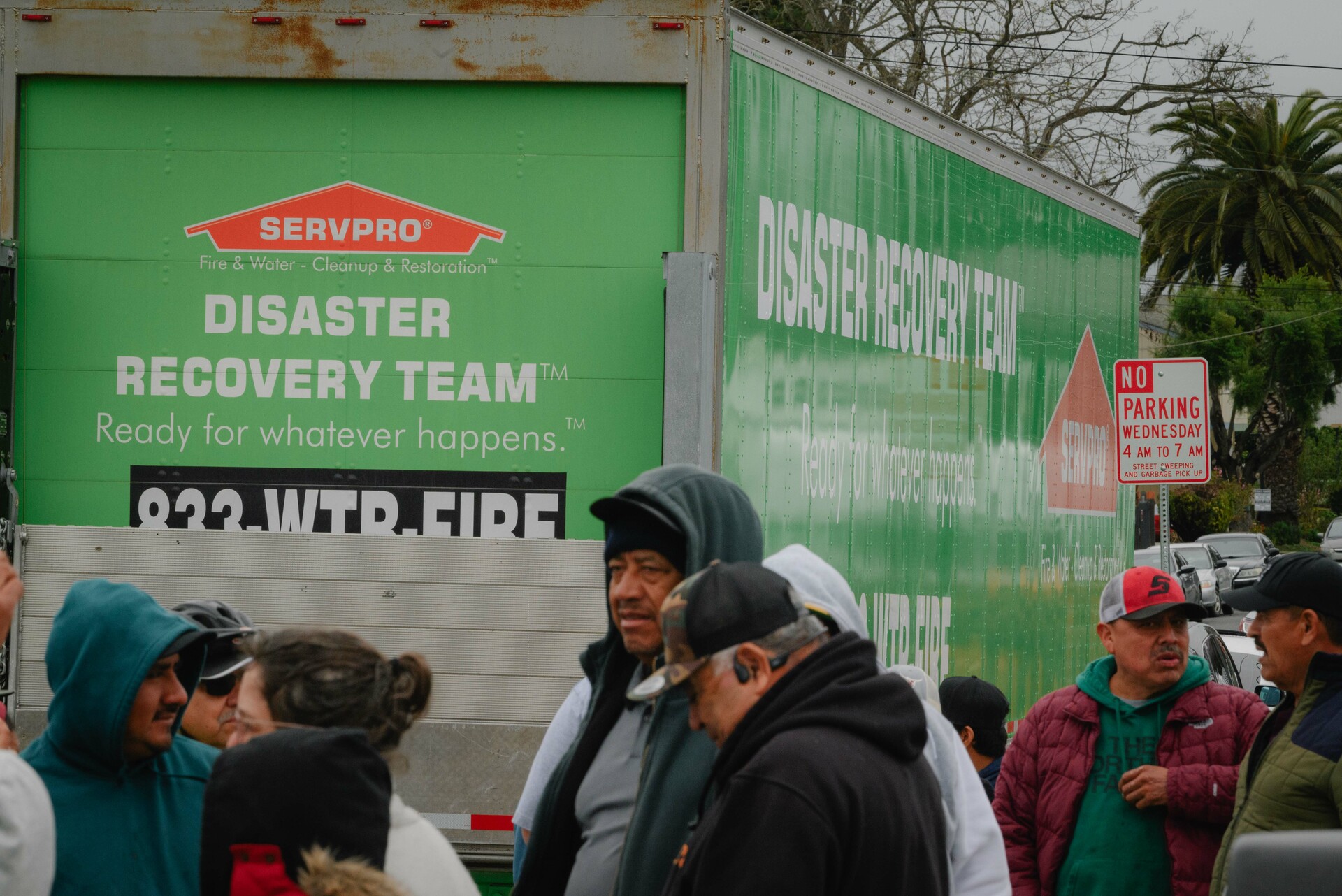
But by last Sunday, Torres and other residents who stayed behind were running low on food and had begun collecting rainwater in buckets. They crossed the bridge to pick up pizza, bread and bottled water from volunteers stationed on the Watsonville side, and were then allowed to return to their waterlogged homes as part of an informal arrangement with sheriff’s deputies at the checkpoint.
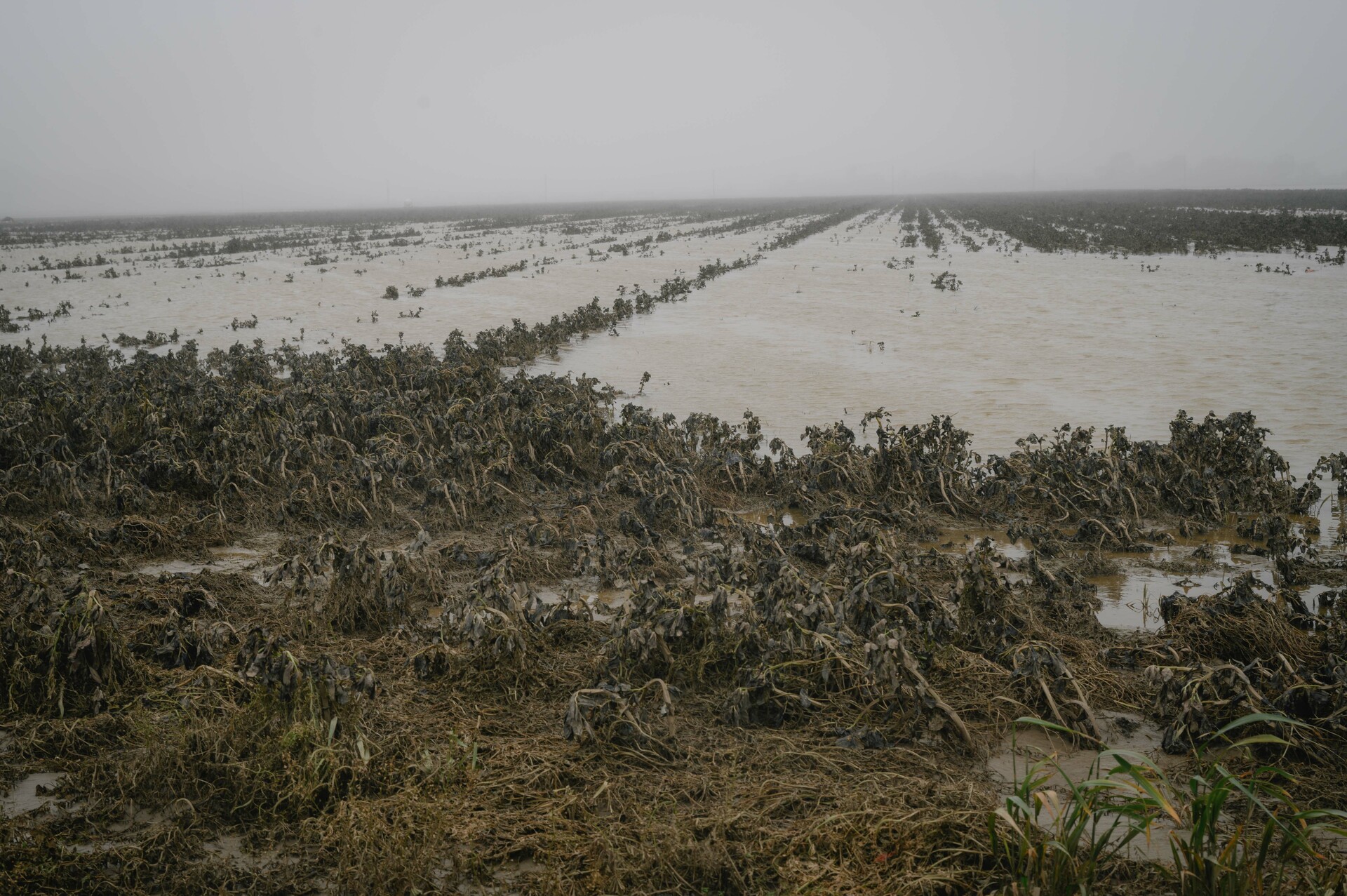
That morning, a group of local businesses from the nearby community of Freedom had set up tents near the bridge and were offering food and other supplies to displaced residents.
“They want answers, and they don’t have answers,” said Barbara Padilla with Community Bridges, a social service nonprofit in Watsonville that regularly works with Pajaro’s farmworker and undocumented communities. “They feel lost.”
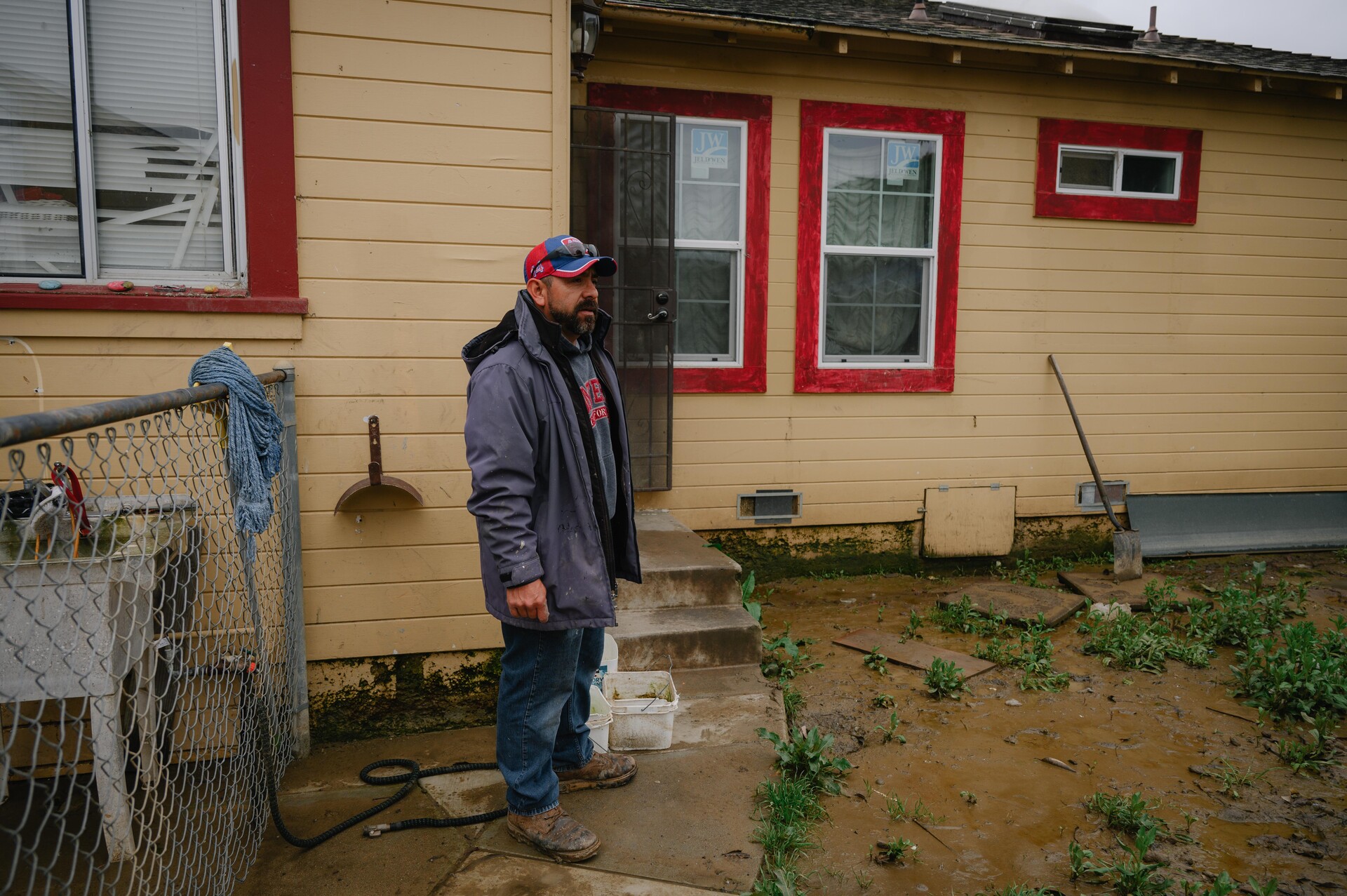
Padilla has been helping residents fill out applications for financial assistance and loaning cleaning equipment like vacuum cleaners and pressure washers for them to use when they are permitted to return home. She said her organization also set up showers at the nearby county fairground evacuation site, where many residents have been staying since the flood.
When the evacuation order came on March 11, José Hernandez, a 46-year-old roofer, sent his family across the river to his father-in-law’s house. But he stayed behind to take care of their pets – two huskies, three cats, a bird and a guinea pig — which he said he eventually had to evacuate by boat.
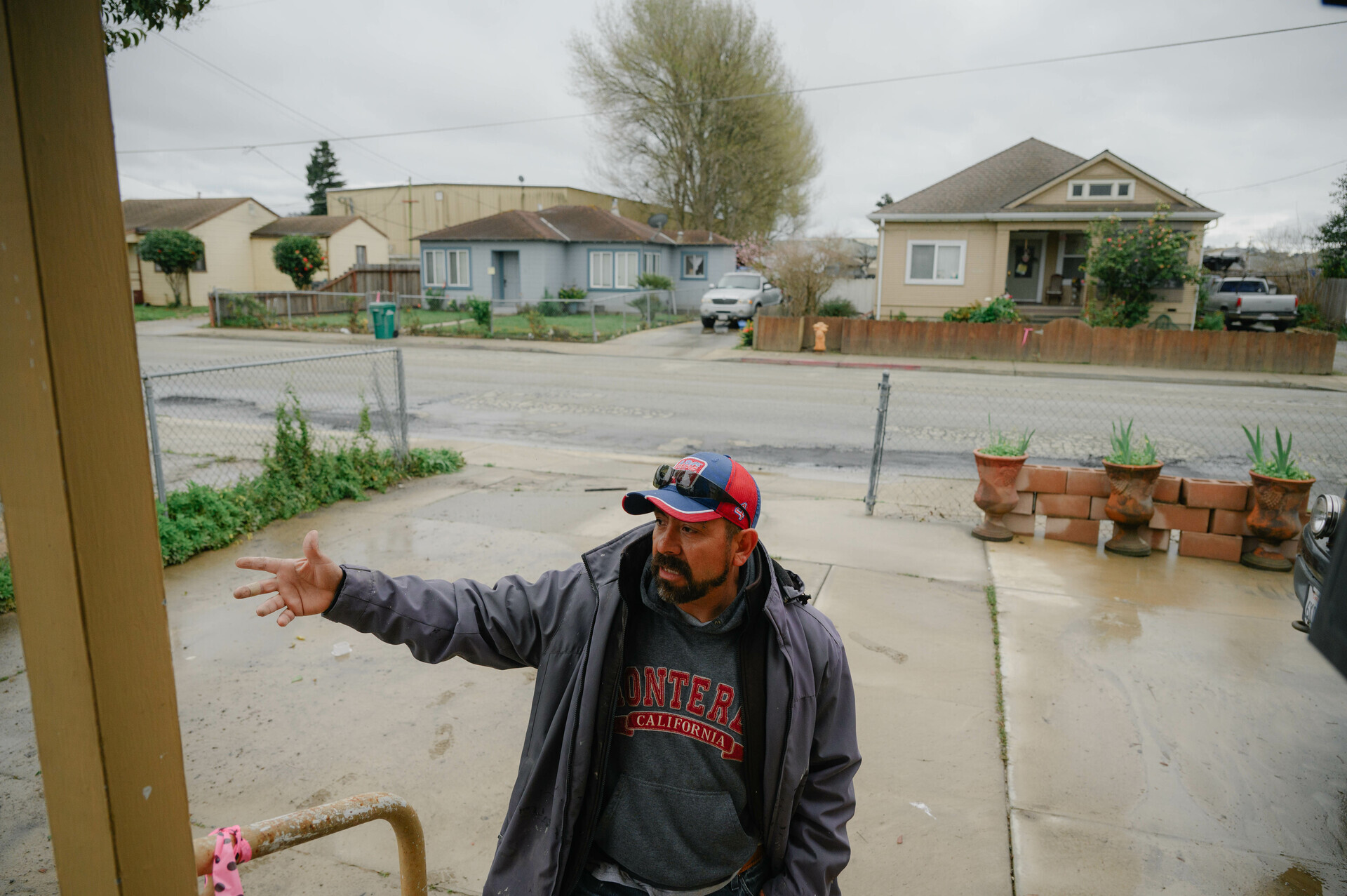
On Sunday, Hernandez was still in Pajaro but said he was planning to cross the bridge that evening to see his family.
“Everybody wants to come back to their houses like normal life. But I don’t know if it’s going to be possible. I don’t know when,” he said. “We really, really need help. That’s the thing. They have to do something now.”
